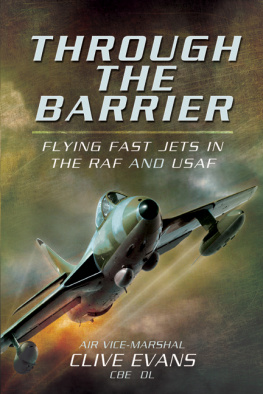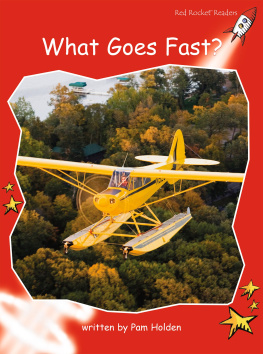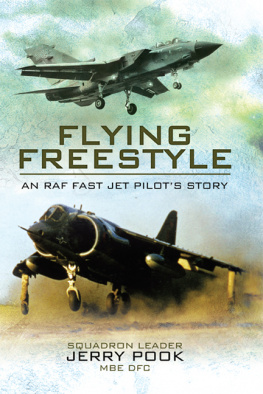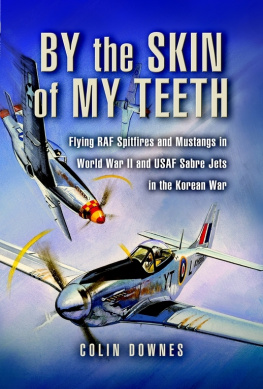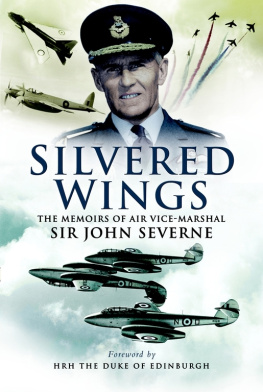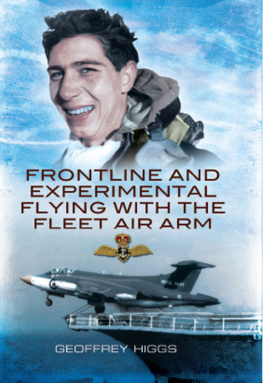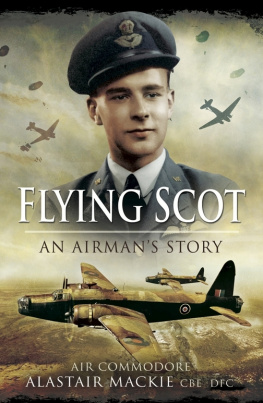
To my dearest wife Terry, without whom
none of this could have been.

First published in Great Britain in 2012 by
Pen & Sword Aviation
an imprint of
Pen & Sword Books Ltd
47 Church Street
Barnsley
South Yorkshire
S70 2AS
Copyright Clive Evans 2012
Hardback 978-1-84884-754-5
eISBN 978-1-78337-640-7
The right of Clive Evans to be identified as author of this work has been asserted by him in accordance with the Copyright, Designs and Patents Act 1988.
A CIP catalogue record for this book is available from the British Library.
All rights reserved. No part of this book may be reproduced or transmitted in any form or by any means, electronic or mechanical including photocopying, recording or by any information storage and retrieval system, without permission from the Publisher in writing.
Typeset in 11pt Ehrhardt by
Mac Style, Beverley, E. Yorkshire
Printed and bound in the UK by CPI Group (UK) Ltd, Croydon, CRO 4YY
Pen & Sword Books Ltd incorporates the Imprints of Pen & Sword Aviation, Pen & Sword Family History, Pen & Sword Maritime, Pen & Sword Military, Pen & Sword Discovery, Wharncliffe Local History, Wharncliffe True Crime, Wharncliffe Transport, Pen & Sword Select, Pen & Sword Military Classics, Leo Cooper, The Praetorian Press, Remember When, Seaforth Publishing and Frontline Publishing.
For a complete list of Pen & Sword titles please contact
PEN & SWORD BOOKS LIMITED
47 Church Street, Barnsley, South Yorkshire, S70 2AS, England
E-mail: enquiries@pen-and-sword.co.uk
Website: www.pen-and-sword.co.uk
Introduction
My history is an everlasting possession, not a prize composition which is heard and forgotten
Thucydides, 404
M y friends have asked me why I have chosen to write an autobiography. The easy answer is that I think that I have something of interest to record but the true reason is much more complex and goes back to the time of my parents death. As I cleared their personal effects I came across some boxes filled with every letter that I had written to them during my time in the Royal Air Force. The total was surprisingly large because I had written at least once per week and I quickly became lost in reminiscence as I opened some at random and became transported in time as I read of my feelings at flying solo for the first time and then joining my first squadron.
Discussing my find with my wife she remarked that it was a real treasure for her because it would enable her to learn so much more about me in the years before we met. Whilst agreeing with her I reflected that I was now denied that opportunity with my own mother and father and I suddenly realised just how much I wanted to know about their early lives. I had loved them so much and had seemed to know so much about them, but now that they were gone there was no way to fill the gaps that I had identified. It was at that moment that I determined to use my letters to write some sort of script so that my children would have an easily digestible record of their parents lives.
Needless to say my good intentions were put to one side throughout the remainder of my RAF career but with my retirement the time became available and it seemed a wholly appropriate moment to look back and reflect on my life in uniform. Once started the recollections fell into a definite pattern, with a catastrophic car accident in the USA, in which my wife and I suffered major injuries, becoming a turning point in our lives. We were both asked to overcome physical and mental barriers of an order that we had not met before and as a result we both went through a complete re-evaluation of our values and priorities in life. Our lives were changed in a way that we could never have guessed and, despite the losses and pain that we endured, we were enriched and blessed in so many ways. For all these reasons it is appropriate that any attempt to tell my story should start with this, the turning point in our lives.
Part I
Chapter One
The Turning Point
There is no road of flowers leading to glory
Jean de la Fontaine, 1668
T he world was pain and the world was colour. And the sharp jolting of the pain and the pulsing red of the colour fused and excluded all other senses. Nothing mattered to me except the pain and the colour; as a repetitive experience I began to fear and savour them as their impact gained in intensity and each pulse of colour seemed to bring with it its own excruciatingly exquisite torment.
How long I lay there in the wreckage of the car before other feelings intruded I have no idea but it seemed an eternity and it was with a strange feeling of almost reluctance that I allowed them to register. There seemed to be an odd comfort in having my world reduced to such a simple state and I became angry with the distraction of having to acknowledge the existence of stars overhead and someone moaning at my feet. Why were the stars there, for they had no part in my life? And who was making these anguished cries, because it was I who was hurting and they had no right to claim any part of my experience?
Slowly, however, my brain began to function and the sounds, feelings and memory started to build a mosaic which developed haphazardly into a partial realisation of who I was and what was happening. Voices began to make an impact and torches illuminated my surroundings. These were all now identifiable and it was clear to me that I was in some way the focus of the activity that was gathering momentum around me. But I now had a fresh complication in that I suddenly realized that I could not move; not that I was restrained in any way but I could not translate thoughts into action. I began to panic and struggle, although this latter aspect was as much mental as physical, because nothing moved.
Panic began to turn to real anger and was directed at whoever was moaning near me, particularly as they had been joined by someone who was crying in a shrill and unrelenting fashion. I felt the need to lash out, and must have been near to a personal breaking point when a voice that I knew well suddenly intruded: Well now, you are in a fine mess, but nothing I guess that a Limey cant handle. Into my restricted line of sight, obscuring the stars, and lit by a flashlight came the friendly face of Senior Master Sergeant Gerry Garrison, a colleague of mine with whom I had spent many hours in the F-111 simulator. As I know now, Gerry was the person who truly saved my life but at that moment he was the friend who saved my reason and started my fight for survival.
Like the true professional that he was he began to plan the operation to save me and my family. He calmed me and briefed me. He answered my questions and told me what was expected of me. That I had been involved in an automobile accident had registered but to my eternal shame it was only as he spoke that it came to me that the noises that had so irritated me had been the sounds of anguish and suffering of my heavily pregnant wife and our two-year-old son.
That evening in January 1969 had started well enough, with a party at my commanding officers home to say Goodbye to us as a family before our return to the United Kingdom the next day following a two year tour of duty with the United States Air Force (USAF). Colonel Bart Bartholomew and I had developed a close personal relationship during my tour as we worked together on introducing the swing-wing F-111 fighter-bomber into service with the USAF, and his gesture in throwing a party for us was wholly in keeping with the nature of this warm and generous man. Enjoyable though the party had been, therefore, there had been considerable sadness and a great sense of nostalgia as we made our final round of farewells in the belief that we would be unlikely to ever meet again. How wrong we were to be in this, as we strapped ourselves into our borrowed VW Beetle and started our short drive back to the Visiting Officers Quarters at Nellis Air Force Base, Las Vegas, Nevada. As usual, a cloudless sky and unlimited visibility gave us unrivalled views of the surrounding mountains and the panoply of stars overhead, and my wife Terry turned from tucking our son Guy more firmly under his coverlet on the back seat to remark on the beauty of the night and to comment on just how much we would miss Nellis upon our return to England in the grip of winter. Completely in agreement with her I grunted in assent and concentrated on turning onto the six-lane divided highway running from Las Vegas alongside our base at Nellis. Little did I know that by so doing I was passing up the opportunity to speak to her for nearly a month and that our lives would never be the same again.
Next page
